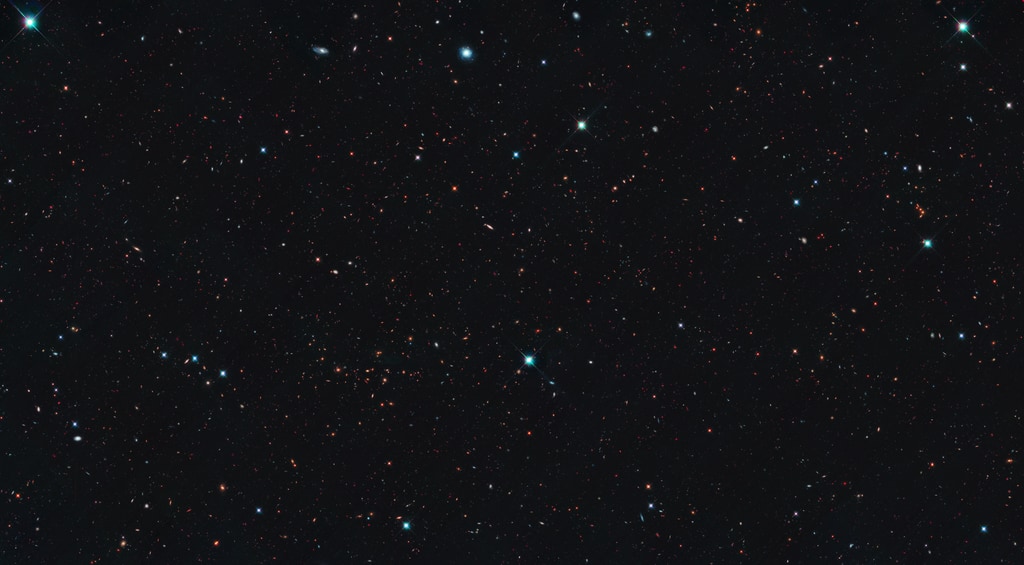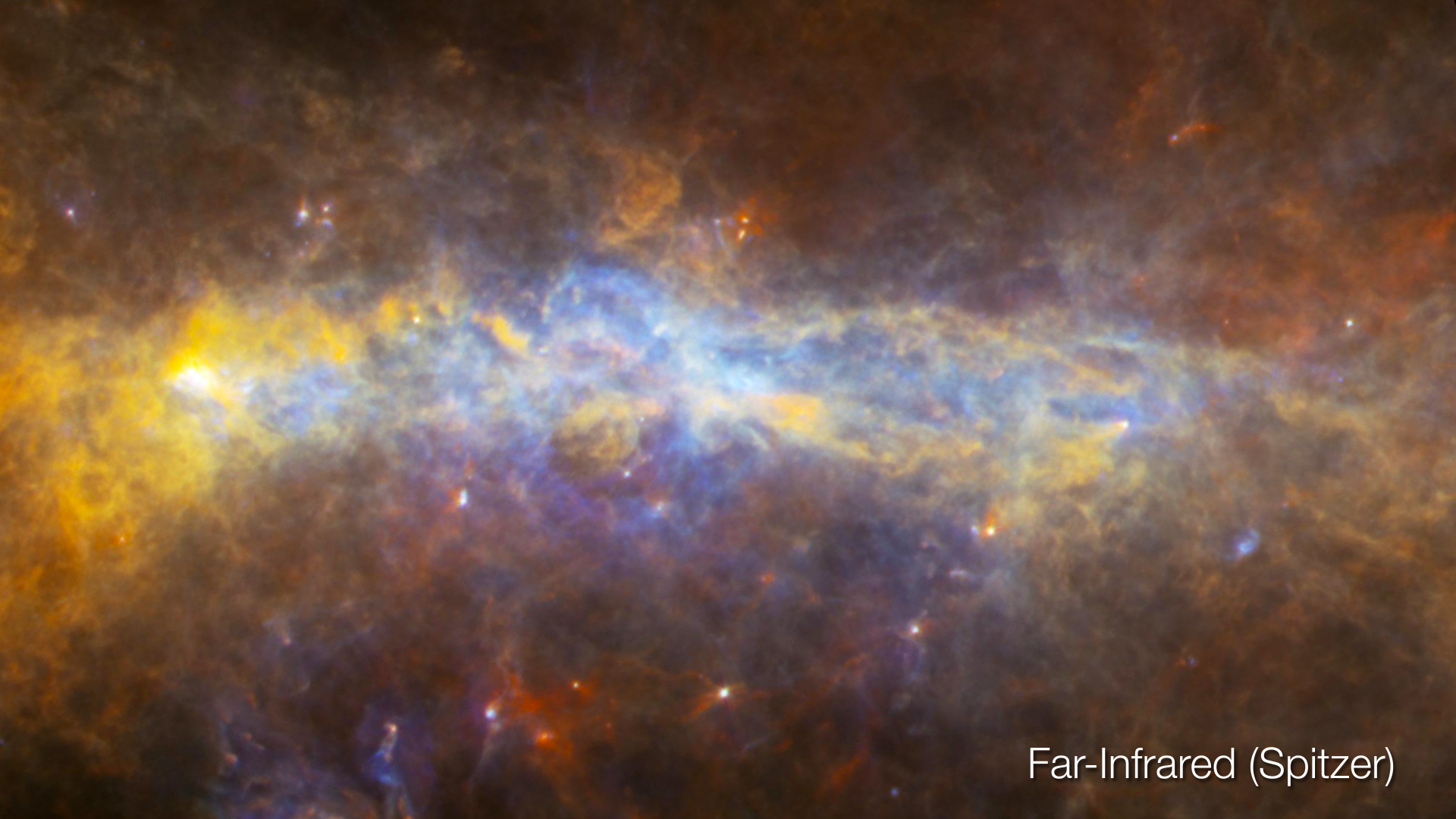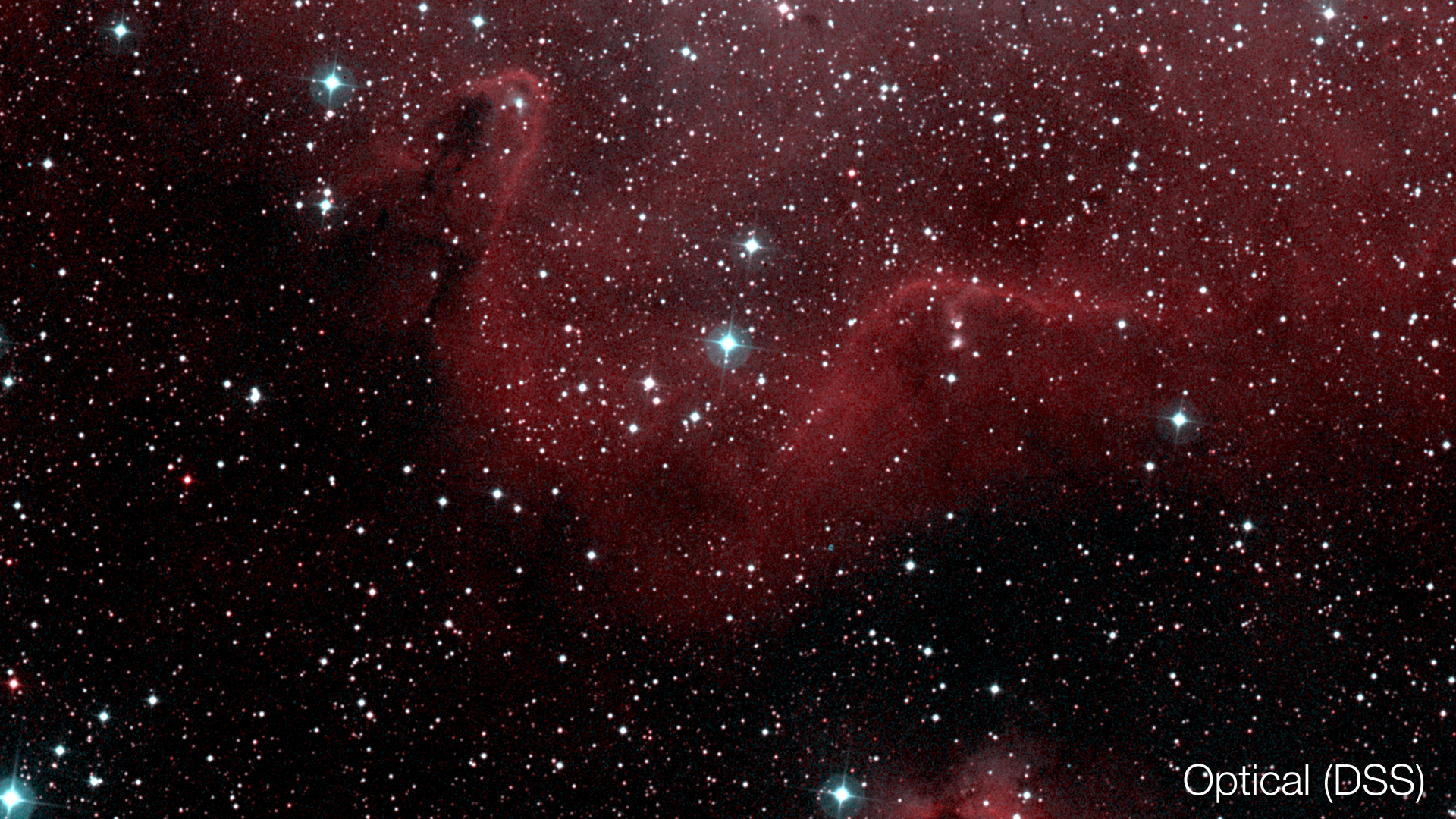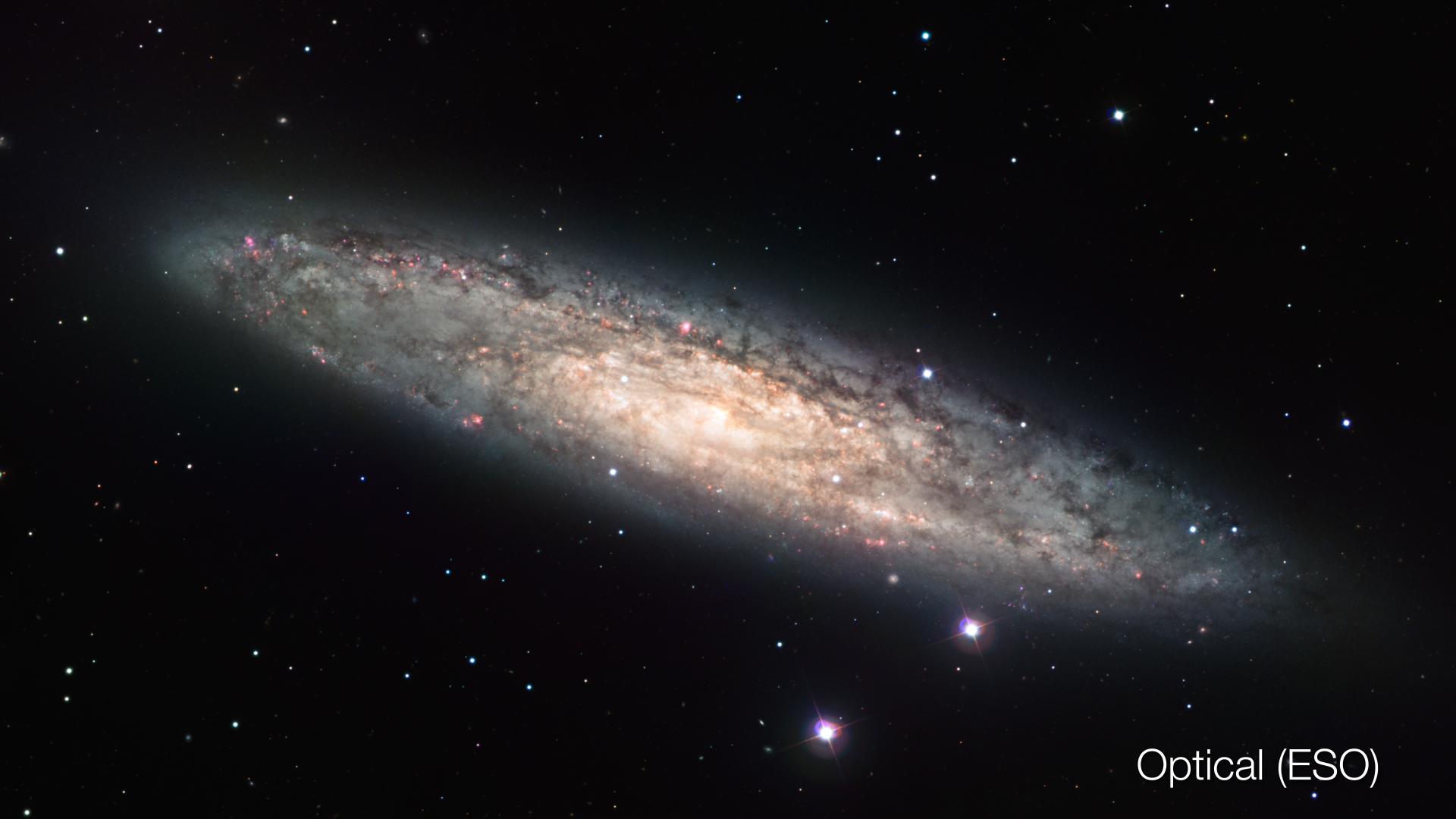Whale Galaxy Panorama
NGC 4631, the Whale galaxy, shows us the edge of its spiral, appearing similar to the single arm of the Milky Way visible to us in the night sky.
The vague wedge shape of galaxy NGC 4631—with the broad area on the left tapering down to a blue tail on the right—led to its popular moniker: the Whale galaxy.
The “head” of the whale here is the galactic center, which is lit up with star birth and gas heated from supernova explosions. This bright light silhouettes bands of dense, darker material that lie between the Whale and us.
Toward the tail there is less dust but still areas of bright blue star formation, driven by interactions with neighboring galaxies. As gas and dust from different galaxies meet in space, denser areas are created, which gravity compacts into new stars.
This is a spiral galaxy seen from the side, or edge-on. This is similar to how we view the Milky Way from our position inside it—we see one of the spiral arms stretching across the sky. The Whale galaxy is actually similar in size to the Milky Way; the area we are seeing here is about 140,000 light-years across.
Credits
Please give credit for this item to:
NASA/Hubble Space Telescope/ESA
-
Visualizer
- Greg Bacon (STScI)
-
Technical support
- Leann Johnson (Global Science and Technology, Inc.)
Release date
This page was originally published on Thursday, December 20, 2018.
This page was last updated on Monday, March 10, 2025 at 12:26 AM EDT.
Missions
This page is related to the following missions:Datasets used
-
[Hubble Space Telescope]
ID: 831
Note: While we identify the data sets used on this page, we do not store any further details, nor the data sets themselves on our site.




























